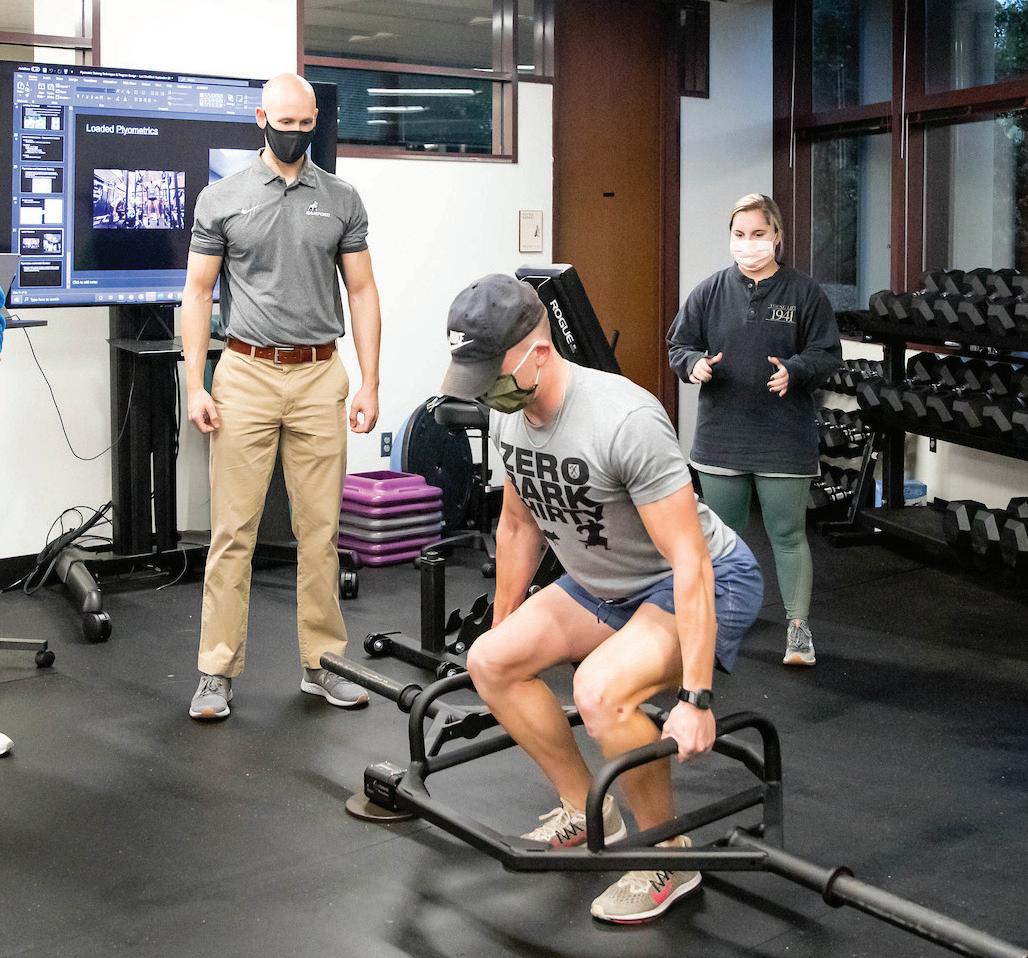
2 minute read
Kinesiology Faculty Ensure Safe and Effective Undergraduate Research, Despite Pandemic
Kinesiology Faculty Ensure Safe and Effective Undergraduate Research,
Despite Pandemic by Daniel Dodson
The quality and quantity of undergraduate research facilitated by students and faculty in the Department of Kinesiology has long been a distinctive feature of Samford’s School of Health Professions. While COVID-19 presented many obstacles, faculty were resilient in making sure students could still complete their original research projects effectively and safely.
“When COVID hit and we had just finished the spring semester, faculty and administration in the School of Health Professions began work on what would be an all-summer endeavor to form a plan to complete undergraduate research safely,” said Christopher Ballmann, an assistant professor in the Department of Kinesiology.
They read medical literature regarding the virus and top medical institutional guidelines to develop a plan that would allow for safe and effective student research.
“We read studies on the most effective cleaners to kill the virus, what special precautions and risk factors needed to be accounted for during high intensity exercise projects, what type of personal protection equipment was needed and how to maintain study design integrity even in the midst of drastic changes in procedures,” Ballmann said. “Establishing our baseline knowledge of these areas was the first step, which had to be followed by training each and every student on equipment and safety protocols.”
Throughout the year, faculty kept extensive records of time spent working in the lab and the amount of personal protective equipment (PPE) used. More than 520 hours of data collection took place over the past year, requiring the use of more than 800 surgical masks, four gallons of hand sanitizer and more than 12 gallons of virucide and bleach.
“Students were ultimately following many of the same procedures as front-line medical workers, and all of them embraced the challenge and did a terrific job,” Ballmann said.
A kinesiology faculty research mentor was always present during data collection to ensure safety protocols were being exercised in the lab. Sixty undergraduate research projects were completed without any COVID-19 cases being linked to the lab, and students were still able to virtually attend regional and national conferences to present their research. Thirteen of these student projects have been published or are in review for publication.
“Samford is among a small group of universities that have the infrastructure to complete high-volume, quality undergraduate research in kinesiology," Ballmann said.
“We teach our students the value of overcoming obstacles, and they, along with our faculty, modeled this principle beautifully. Through creativity, problemsolving and a lot of effort, the faculty and students were able to conduct high quality research in a safe environment during a pandemic,” said Alan Jung, dean of the School of Health Professions. “They all deserve a lot of credit for this remarkable accomplishment.” ◗












